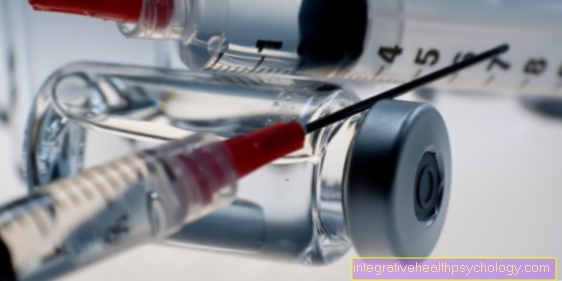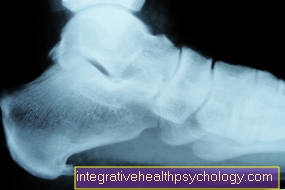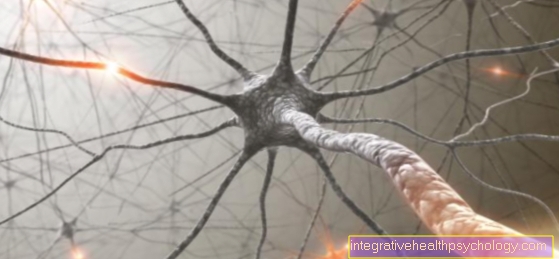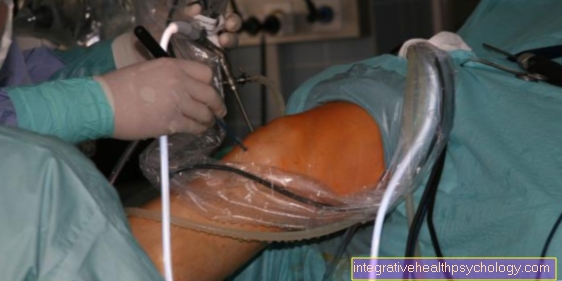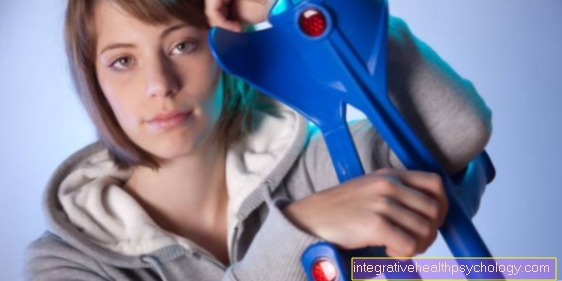Dementia test
introduction

Diagnosing the onset of dementia can be difficult if the patient refuses to cooperate. Since most of the sick initially notice that something is wrong, many of them try to avoid unpleasant situations by using a wide variety of avoidance strategies. In order to be able to make the suspected diagnosis of dementia, the statements of the patient and all other available informants must be included. Family or friends who are in the constant environment of the patient are often of great help. If it comes to a doctor's visit, the specialist has various options.
On the one hand, diagnostics can be carried out in the laboratory and supported with imaging methods such as sonography, EEG, CT or MRT.
On the other hand, neuropsychological test methods should be used, since these mean a low burden for the patient with a high level of standardization and meaningfulness of the test forms. As part of the rapid detection of cognitive deficits, as they occur in dementia patients, a number of test examinations have been developed, some of which have particularly distinguished themselves.
For general information see also: The dementia
Mini Mental Status Test (MMST)
Of the MMST was developed to be a simple Screening procedure to be able to use them to assess cognitive deficits. Since its introduction in 1975, the MMST has distinguished itself as a very reliable test method. In the Alzheimer- and dementia diagnostics, it is the most widely used diagnostic tool. The MMST is ideal for measuring severity and for process control with existing therapy. Cognitive deficits are widespread through a 30 point system checked and examined the following skills: orientation, memory, concentration and Arithmetic, language, Understanding hearing and Follow of instructions as well Trace.
procedure
The mini mental status test takes about 15 minutes and should be performed by a medical assistant or specialist. The test person is first to his temporal orientation questioned. The date and the day of the week, as well as the year, month, day, and season are to be named. If it turns out that the test person is time-oriented and knows the correct date immediately, a more precise inquiry can be dispensed with. The test person receives one point for each individual fact.
The is similar Verification spatial orientation. It is based on the momentary localization The respondent is referred to by asking them about the country and state, the city, the facility and the floor on which they are located. Subsequently, the test subject three simple words called (e.g. car, flower, candle). He should repeat this directly and keep it in his short-term memory for a moment. An easy one follows Arithmetic problem, where the test person should subtract 7 from 100. From the resulting result 7 must be subtracted again and so on. The invoice is valued up to 65. If the test person does not name the correct result, this will be given to him so that he can continue the task. If the test person is not able to successfully complete the calculation, the word "radio" can alternatively be requested. spell backwards. In both cases the concentration of the test person is checked. After the intermediate task, the memory test is completed. To do this, the test person should repeat the terms just memorized (e.g. car, flower, candle). For each term that is remembered, the test person receives one point.
The language skills checked by naming a wristwatch and a pencil, and repeating any sentence. Here are some verbal instructions that are formulated by the tester. The patient should, for example, pick up a sheet of paper and fold it up. Understanding reading is checked by a written request ("Close your eyes!"). If the test person follows the instructions, he receives points again. At the end of the test, the Fine motor skills and the constructive thinking controlled by the subject by writing a complete sentence and tracing a shape.
evaluation
The maximum number of points that can be achieved is 30 points. The test person receives one point for each completed sub-task. Depending on the literature, the limit value for dementia is between 24 and 26 points. It is advisable to include the everyday skills and statements of the patient and the experiences of relatives for a targeted diagnosis. If the score is below 23/24 points, dementia is very likely. The threshold for moderate dementia is given at 20 points and for severe dementia at 10 points. Antidementia drugs, drugs that counteract dementia, are paid for by health insurance companies from under 24 points and up to 10 points.
Evaluation and criticism: The execution and evaluation of the test takes only a little time and keeps the stress for the patient as low as possible - clear advantages of this screening method. Of the Test records several diagnostic criteria at the same time and can be carried out even with the slightest suspicion. In addition, the course of the disease can be monitored when therapy is used.
The disadvantage is that low sensitivity of the test procedure in mild dementias. This means that only a few patients who are in the early stages of the disease will test positive. In addition, doing well in some tasks can mask failure in others. Of the MMST is very susceptible to disturbing influences. The interview should be in a quiet environment be carried out with understanding. The result is a rough overview of existing deficits, which, however, do not allow a precise diagnosis. Further tests must be carried out for this. In the past it has happened that depressed people got a bad result in the MMST. At a severe depression can it to cognitive limitations that must be differentiated from dementia.
CERAD test battery
The research association "Consortium to Establish a Registry for Alzheimer's Disease“(CERAD for short) deals with the registration and archiving of Alzheimer's dementia patient.
As part of this, the organization has put together a standardized test battery that is intended to simplify diagnostics.
The content of the series of tests are 8 units that deal with cognitive abilities. The whole thing is completed by one Intelligence test and the Verification of the visomotor speed (Speed of cooperation between the visual system, the brain and the motor skills). Since the CERAD test battery already provides good comparative values with healthy and sick subjects, a relatively objective assessment of the state of the disease can be given when it is carried out.
The individual tests, however, are to be assessed differently and are not all equally differentiated depending on the severity of Alzheimer's dementia.
Vocabulary test (WST)
With the WST that will be verbal intelligence level and thus the crystalline intelligence of the subject tested. This is age-independent and relatively stable in relation to dementia reduction. Crystalline intelligence comprises factual knowledge and learned behaviors that have developed in the course of life. She depends heavily on the so-called fluid intelligence together which the basic mental capacities describes a person and is innate. In addition to his intelligence-gathering function, he can also monitor the progress of Dementias be used. The test is carried out with the help of 40 tasks, which deal with the correct recognition of terms. With increasing difficulty, word sequences are presented to the test person that contain a target word and 4-5 abstract new formations. The subject's task is to grasp the target word as quickly as possible. Since the words in the further course of the test are technical language elements, the educational level of the test person is checked.
Number connection test (ZVT)
The ZVT measures the Brain power speed of a subject. This is one Intelligence testwhich is carried out regardless of the language and is based on the simple skill too counting relates. The speed of performance is based on genetically determined abilities and thus demonstrably correlates with the subject's existing intelligence level. The process of the test is relatively simple. Apparently random numbers are noted on a template. These must be in linked in ascending order where the next higher number is always to be found in the immediate vicinity of its predecessor. This task combines the ingestion of information with its processing and the eventual conversion into a movement - the visomotor ability is being measured. Since the test can already be carried out in young people and into old age, it has a large diagnostic spectrum and gives the opportunity to objectively assess the intelligence of a test person.
Verbal fluency: When measuring the verbal fluency the speed of speech production is checked. A control of the associative thinking is possible by naming different terms with a common characteristic. Which feature this is can vary from test to test. A common first letter can be specified just as expediently as a category (e.g. "animals"). Subject to the given feature, the test person must name or write down as many suitable terms as possible in 1 to 2 minutes. The memory is also checked here. It comes to Multiple answers this can be an indication of a weakened short-term memory.
Boston Naming Test
The Boston Naming Test assesses visual perception and the resulting Word finding and object naming checked.For this purpose, the test person is shown 15 objects or pictures of those which he has to name correctly.
Mini Mental Status Test (MMST)
The MMST is also part of the CERAD test battery, as it is a tried and tested test method for checking cognitive deficits applies. Further information can be found in the section "MMST".
Learn word list
The test person is presented with a list of 10 terms which he should read once and memorize it. The process is repeated three times, changing the order of the words but not the selection. The immediate short-term memory is particularly required at the verbal level. A review of the Ability to learn possible by having to store unassociated information.
Constructive practice
The test person has the task of four geometric figures to be drawn. These are arranged in increasing difficulty and include a circle, a rhombus, two overlapping squares and a cube. The visoconstructive skills are limited in patients with dementia and the planning of the object to be drawn cannot be fully thought out. An incorrect or inaccurate execution is the result.
Call up word list
Now the test person is asked to remember the 10 words of the word list. This further memory control applies to the medium-term memory retention on a verbal level. Delaying one minute bypasses the use of short-term memory and verifies episodic memory.
Recognize word list
The test person is presented with 20 terms, 10 of which correspond to the words from the list. The task now is to recognize all the words. Due to the simplified retrieval conditions, you can choose between Storage and retrieval deficits of memory can be distinguished.
Get constructive practice
Similar to the previous task, the test person should call up information that has already been seen or learned. To do this, he should draw the geometric figures that were shown to him a few tasks before, without a template. The non-verbal performance of memory can be controlled by reproducing without template.
Watch sign test
In which Watch sign test (UZT) is an everyday practical test procedure in which the test subject receives a Record the clock with the corresponding time got to. The frame of the clock can be specified or drawn by the test person himself. The personnel carrying out the test gives the test person a time, for example 9:40 a.m. Now the Implementation time of 5 minutesin which the test person shows the digits, the clock hands and the correct position of these, i.e. the correct time must draw in. During the test, the visuospatial skills of the patient are checked and deficiencies in the constructive thinking detected.
Once the test period has expired, the result is assessed using a standardized system. Here the subject gets The following points: 3 points if the number 12 was drawn in above; 2 points if the watch has 2 hands; 2 points if 12 digits have been drawn in and another 2 points if the correct time is shown. A score below 6 is considered alarming, although the rating system varies among different authors or working groups.



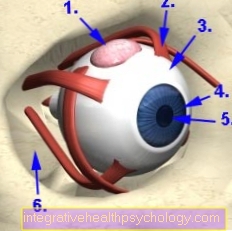




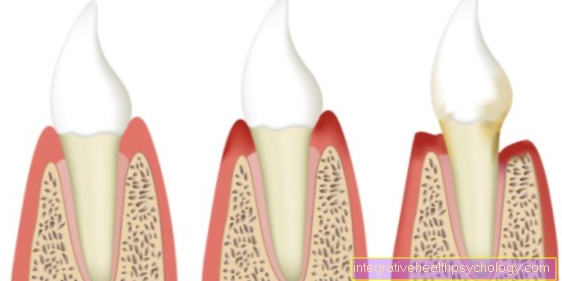

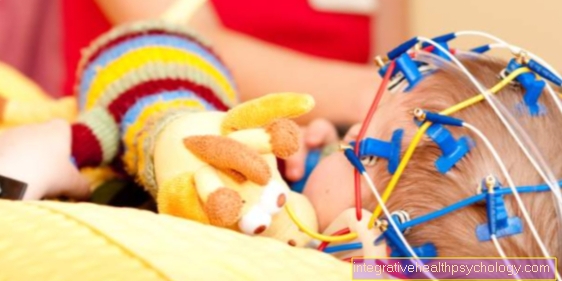
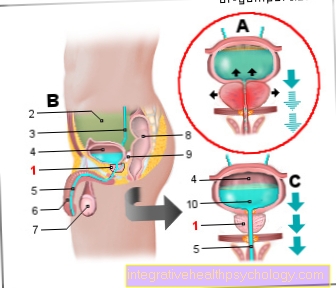



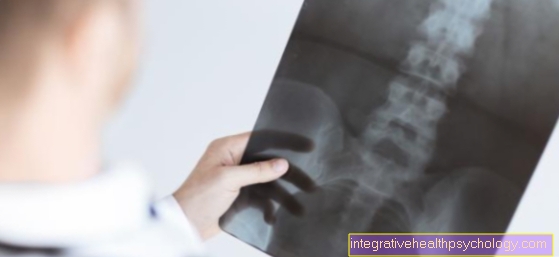
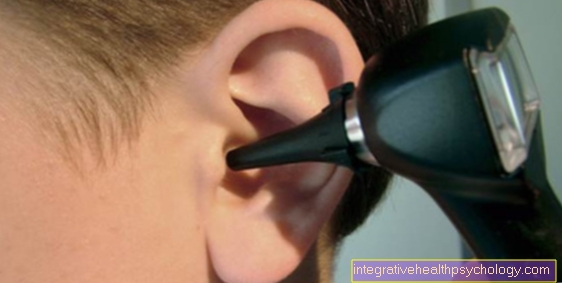

.jpg)


